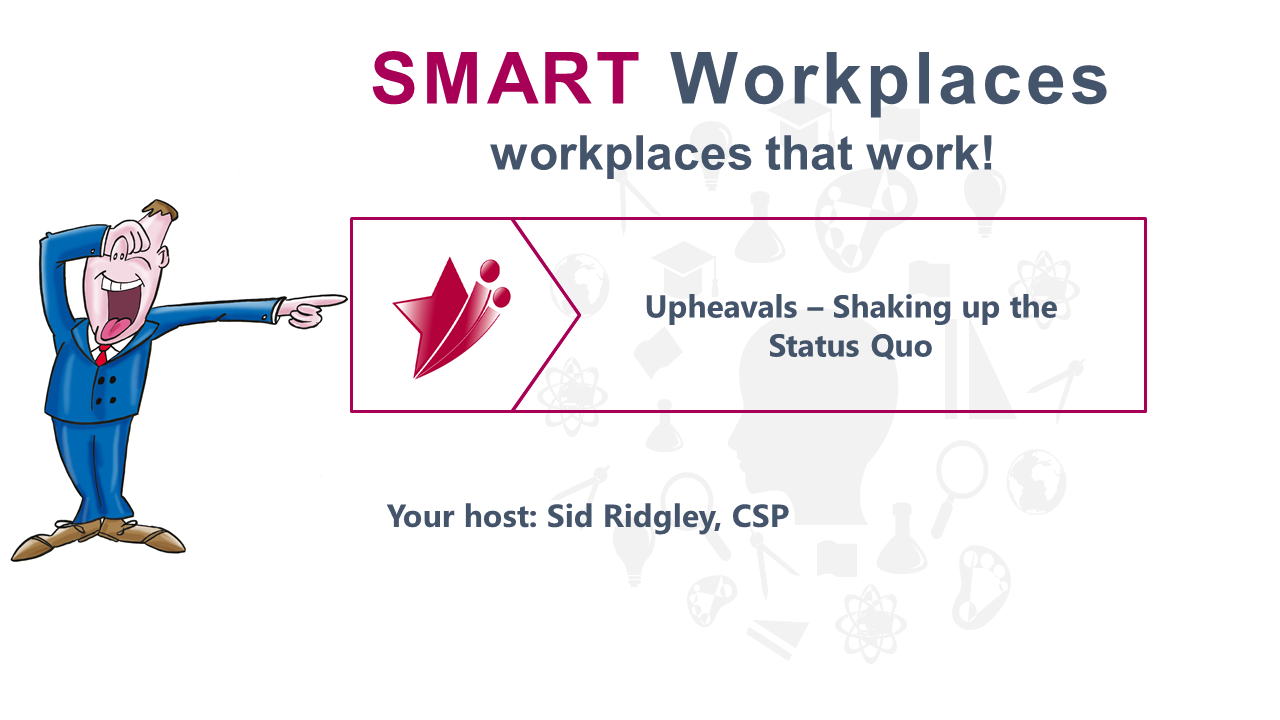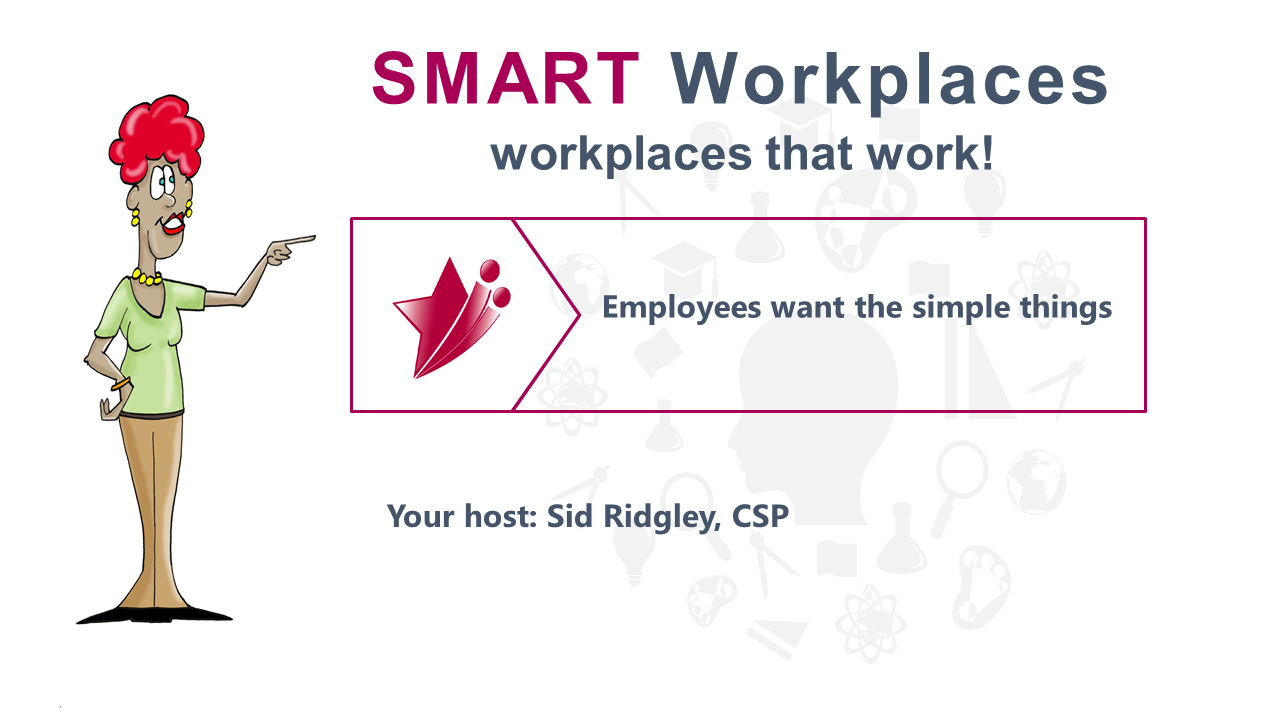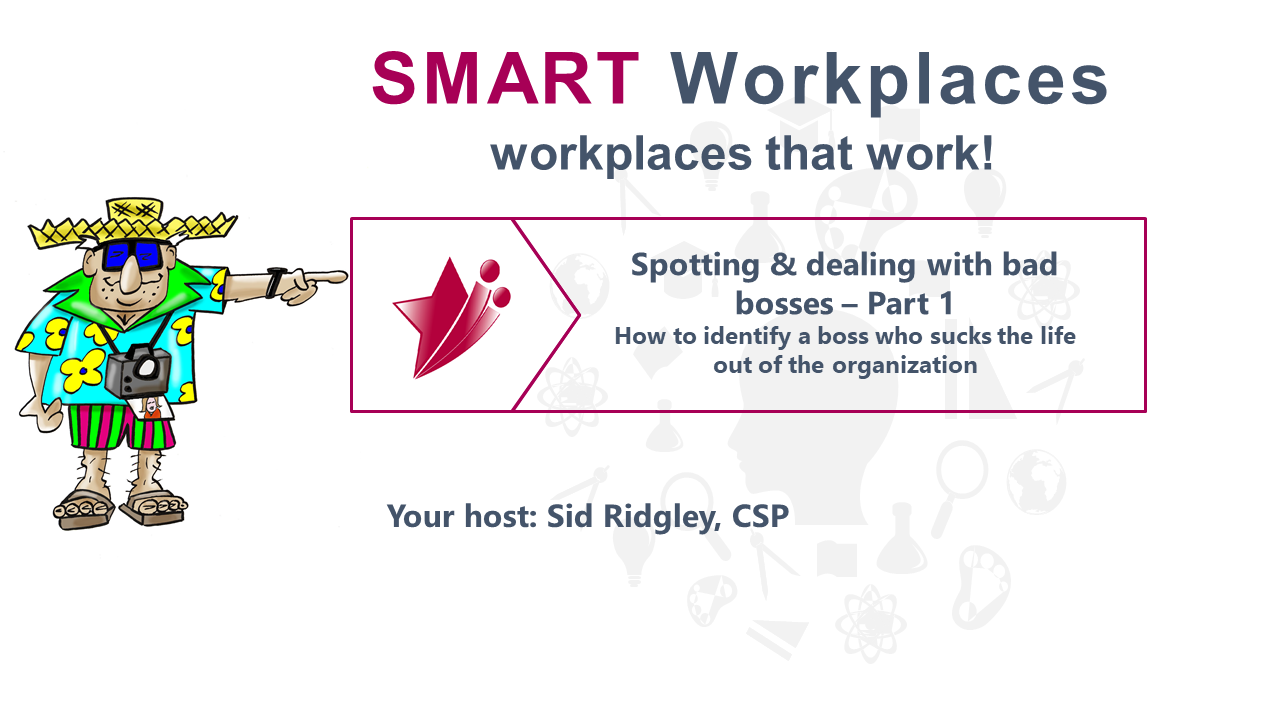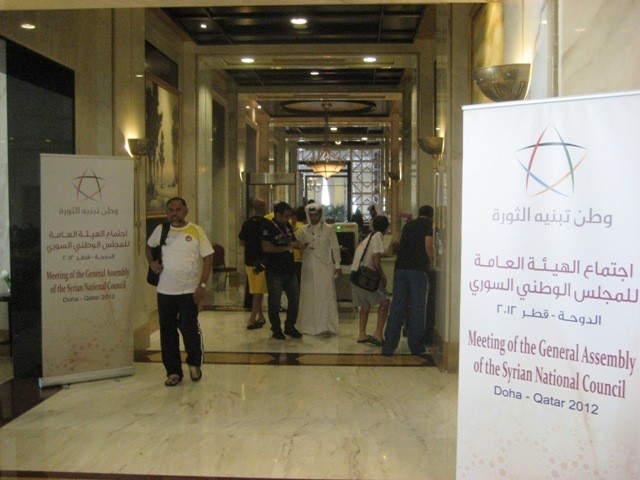
This is video #1 of 3 produced for McMaster University’s DeGroote Executive Education Insight Seres.
DeGrooted Exec Ed Link to Taking CARE of Your People
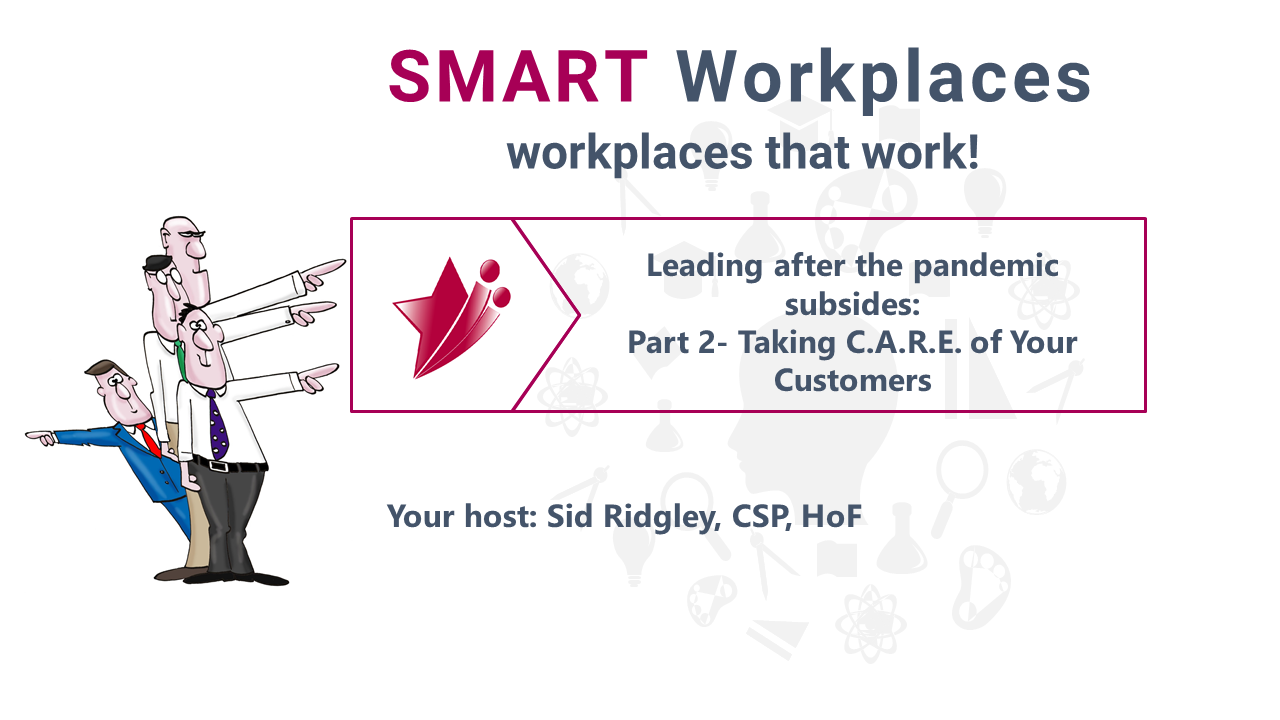
This is video #2 of 3 produced for McMaster University’s DeGroote Education Education Insight Series.
DeGroote Exec Ed Link to Taking CARE of Your Customers
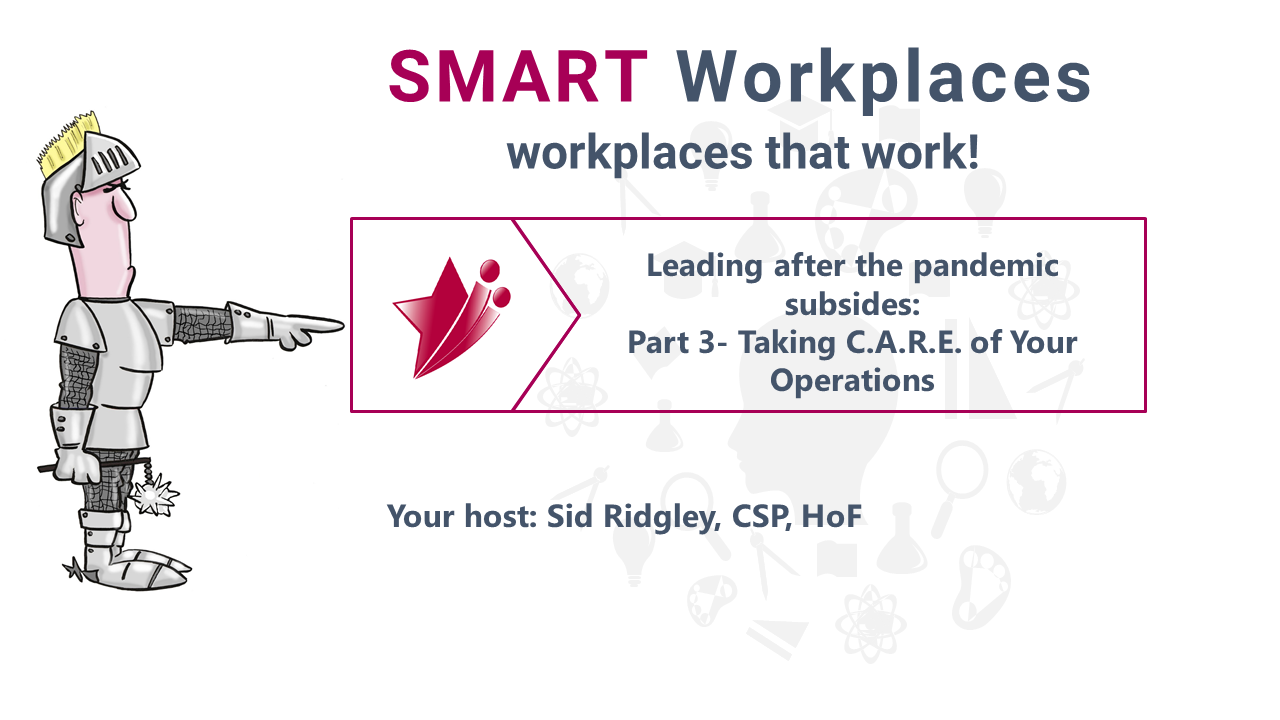
This is video #3 of 3 produced for McMaster University’s DeGroote Executive Education Insight Series.
DeGroote Exec Ed Link to Taking CARE of Your Operations
Leadership development is a multi million-dollar industry with thousands of voices touting the next ideal formula to build a successful leader. The differences between management and leadership have been debated for years. Yet one thing remains constant, organizations rely on leadership (both formal and informal) for their success. While “leadership” can feel like an elusive topic, there are several things I know to be true. To begin, leaders who are self aware, know their values and leverage those for the organization are more successful. In addition, management and leadership are different concepts yet intimately connected. Finally, leadership requires hard work.
Simon Sinek believes that great leaders start with “why”; what is the higher purpose to our work that drives “what we do” and “how we do it”. In a world hit with one crisis after another, the challenge for every organization is to be relevant to customers, employees and stakeholders. Leaders are tasked to create agile and responsive organizations, filled with people who are passionate about delivering value to the people they serve. However, how do we create a corporate culture that brings the most out of each individual? The key is being confident in your personal “why”. Successful leaders are able to create a culture of engagement that stems from the alignment of personal and organizational values. A leader’s awareness of their own personal values allows them to generate alignment to organizational culture with others, influence behaviour and decision-making, attract people or repel others from leadership, and identify areas of opportunity for personal development.
The debate around management vs leadership is ongoing. According to Peter Drucker, “management is doing things right, while leadership is doing the right things”. It takes leadership skills AND management capabilities to create a high performance organization fully focused on achieving meaningful results. Leaders do this by capturing the hearts, minds, energy and talents of everyone in the organization. Having strong management abilities helps to secure appropriate resources, define decision making latitude and develop competencies and other important aspects for completing tasks proficiently. Leadership and management are not exclusive, leaders require management skills to “get things done” while managers need leadership skills to motivate and inspire. I believe creating a legacy of achievement is best done by talented people who are excellent at both leading and managing – we are not in an either/or world but an and/also world. When authentic leaders lead from the front, inspiring people to act, and managers provide the resources and tools, high performance is guaranteed.
Realizing leadership potential is hard work. It is a never-ending process of self-reflection and development. The awareness of leaders around their areas for development or “blind spots” can be the most critical for their success. The very best leaders and managers I’ve worked with, coached or developed are skilled at identifying the opportunities and challenges around them and can provide clarity to their teams despite the inherent ambiguity that leaders often face. They believe in developing the skills of their team and are not afraid to surround themselves with people who can help fill their own skill gaps. They are always encouraging – some might say even pushing – people to achieve more and self-actualize. They relish the idea of creating a legacy built on creating an improved and different organization, ready and able to respond to almost any challengesthrown their way.
I have worked with thousands of leaders around the world. The most effective leaders and managers share the ability to leverage their own values, understand the values of true leadership and management, and are on a constant path of self-development. They have done both the self-reflection and the hard work to find their own voice. The leaders we love to work with may not be the best at everything they do, but they show up and give their best every day, willingly giving their time, energy and expertise to achieve a legacy. Fueled by a reason or purpose for doing what they do so passionately – a personal “why” – great leaders inspire others in building stronger organizations and lasting legacies.
Sid Ridgley
April 2, 2018
 After 30+ years training and developing leaders – around the world – one of the great mistakes I see being made is the lack of understanding of the difference between “training” and “development”.
After 30+ years training and developing leaders – around the world – one of the great mistakes I see being made is the lack of understanding of the difference between “training” and “development”.
Not understanding the difference can lead to wasted time, effort, money and credibility of the decision-makers.
For our purposes, Training is a structured learning process for employees for the purpose of enhancing skills, competencies or capabilities needed to be successful in the job. The goal is to improve some combination of company job desires such as: productivity, performance, safety, quality, or flexibility. We typically look at training for addresses present or immediate needs in the organization. The goal of training is to improve on-the-job performance while increasing the employees ability to adapt and flex to changing demands.
Development is about helping individual employees learn and grow and often will include self-reflection, self-assessments, and/or 360 degree assessments. Topics are chosen based on the idea the investment in time and energy ought to increase the employee’s potential and/or help them become more effective. The goal of development is to help employees be more successful today while they prepare to be successful again tomorrow – in a changed world.
To simplify, I will often say: “Training is about improving efficiency while Development is about improving effectiveness”.
Truthfully most company investments ought to have a combination of both “training” and “development”. The question is how much of each is required for the employees participating in any on-the-job, one-on-one, on-line, or in-the-classroom activity.
Recently I’ve been appointed to the Advisory Committee for McMaster University’s DeGroote School of Business – Executive Education. What I value is this organization understands the difference and is very much participant centre. In a world, where most universities simply want to through a raft of brochures at you, DeGroote will take the time to listen to understand thereby have a real conversation.
As an instructor, facilitator, coach and mentor, I appreciate DeGroote’s high standards. You will too. When your organization needs training and development do take the time to connect with one of the professionals at DeGroote.
I should point out that the label “training” is being used less frequently and be replaced by the word “learning”. The reason behind the shift has to do with “who” has the responsibility to ensure an employee is both efficient and effective in their current role. At the end of the day people have to acquire the skills and competencies needed to be productive and efficient – they need training!
As I write this article we are seeing lower unemployment levels and a demographic mix which shows there will be a tremendous number of people – with lots of experience – “retiring” (so-to-speak). Those entering the workforce and those who remain value an organization who is prepared to invest in them. In a war for talent, training and development is not a nice to do, it is a must do.
Sid Ridgley
January, 31, 2018
The advantages and disadvantages of the popular TED format are highlighted in this article published in Speaking of Impact magazine Spring 2015 by www.canadianspeakers.org. Access the Spring 2015 edition of the magazine here OR access the article here.
It is time to ban the well-intentioned phrase “people are our greatest asset” as it is outdated 20th century thinking. A phrase that holds little meaning to companies and employees alike.
We see and hear this cliché all the time – in vision/mission/values statements of companies and (worse) from presumably enlightened senior executives. Executives will use the phrase as a means to suggest that they actually care about the people who look after customers while creating value for all stakeholders. (It is true that there are some executives who back up their use of the phrase with hardcore dollars and emotional currency – but, they are the exception and not the rule.)
Seven reasons to ban the phrase. “People are our greatest asset”:
1- The cliché has been so abused that it has lost its credibility with just about everyone in an organization. Actually, the phrase is more likely to incite anger and negativity in workers.
2- Our 20+ years of conducting employee satisfaction and organization culture surveys tells us that one of the top five issues in most organizations today is “trust of senior leaders”. This is strictly a leadership issue; using the phrase and not living up to it creates a trust gap. The result, people show up for work, but they have intellectually and/or emotionally quit a long time ago.
3- In many organizations the top Human Resources executive reports to someone other than the COO or President. So much for notion of people being the greatest asset. (By the way, another out-dated term “Human Resources”.)
4- When the top HR person isn’t reporting to the President then they are often reporting to the CFO (Chief Financial Officer) – mistake number two in most cases. This perpetuates the notion that people are assets that can be accounted for, bought and sold. Who amongst us likes to be thought of as an asset – owned by the organization to do whatever it wants to do with its assets?
5- Almost every organization is talking about “employee engagement”. If “people are our greatest asset” were even remotely true then engagement wouldn’t be anywhere near the issue it is in most organizations. The reality is, “employee engagement” is an emotional based outcome not a program. But the “people are assets” mindset encourages a belief that engagement is something that you manage: so let’s send out a few memos, have meetings, put up posters and have executives talk about employee engagement. Hello? This from the same execs perpetuating the term “Employees are our greatest asset” (Am I alone in seeing the humour in this?)
6- Dumb HR policies that demonstrate the truth about how the organization views its people as assets. The first one is where an organization has an attendance management program. Hey, if people aren’t showing up to work that is not an attendance management problem! The second, is the HR practice of bell curving employee performance which replaces human judgment with a mathematical formula that states that X percentage of your workforce has to be rated at the bottom while X percentage of your workforce has to be rated at the top.
7- In times of economic challenge what are the first items to be cut out of the budget? Training, travel and advertising…then employees.
What is an employer to do?
The first thing to do is to understand that the cost of personnel is not the same as their value.
The second is to take a hard long look at the culture in your organization – employee engagement and/or poor performance may not be a skills issue, rather the unintended consequences of a defensive workplace culture.
Third, consider re-focusing human resource activities and programs towards Talent Development.
Fourth, recognize that your people can not create value if your manufacturing, distribution, product line or customer care practices are not competitive. There is a symbiotic relationship among all of these things.
Finally, ban the phrase “people are our greatest asset”. Develop a new one – one that sparks a sense of movement. Here is my take at a new phrase: “Our people create value for customers and all stakeholders”. What would your phrase be?
Sid Ridgley, is an experienced corporate executive and Certified Speaking Professional who specializes in helping leaders create operationally effecitve ideal places to work and to do business with. Sid can be reached at sridgley@simulcorp.com.
Sid will be attending the Global Speakers Federation Summit in Vancouver, BC Dec. 8-10 2013 www.gss2013.com
Published: Electrical Business, July 2011; Updated March 2013
To-do or not to-do, that is the question. There will not be a day that passes wherein you will not be faced with the task of making a choice – whole wheat or rye, backwards or forwards? Sometimes it doesn’t matter which way you go so long as you did something. However, sometimes we are so overwhelmed by the choices at hand and consumed with angst over the possible outcome from our choices that we choose not to choose. Reality is, choosing not to make a decision is already a decision – and choosing not to decide at all out of fear of making the “wrong choice” is worse than making the wrong decision. This angst and this fear is bred from lack of self-confidence. Choices are what fill in the gap between knowing and doing. Confidence is the energy that gets you crossing over the gap.
Contrary to popular belief, choices (or decisions) are not made logically; they are made emotionally. I believe that feelings of confidence – confidence in ourselves and/or others – either, propels or repels us towards our goals.
Making a choice in isolation is like flying a plane alone in a dark fog without any equipment or resources to help. It becomes guesswork. You are not alone and not without resources. Your relationships are a key part of your resources. Bouncing an idea off someone or asking for help with what seems to be a complicated choice can add clarity to something that otherwise would remain foggy.
This is by no means a sign of weakness, rather a real source of strength.
As professionals who speak, particularly if we’re a member of a GSF association, we have a network of other professionals to call upon. Call upon to verify, to get a second (or third or fourth) opinion, and to benefit from the experience of others in developing a second right answer.
This is not about the simple gathering of opinions of others, but more about getting the right blend of knowledge and experience so that you feel supported following your decision. It’s that support that gets you out of that fog, over the clouds and sailing into clear skies.
The Global Speakers Summit has defined Choices as: “An action or inaction resulting in a decision between 2 or more possibilities, which in turn, impacts the destiny of individuals, organizations and countries.” Earlier I said that “choice” fills in the gap between knowing and doing – but the fuel “to-do” is the energy that comes from confidence. Confidence that you acquire through your network of professional contacts and relationships. Getting rid of, or minimizing, the ‘angst’ in making choices is achieved by building confidence in yourself, your abilities, your skills and your experience.
It is one thing to do and/or improve that things that will make you more successful today, it is quite another to ensure that you are doing the things you need to do to be “successful again” tomorrow – in a changed world. Whether you are making short-term and/or long-term changes to self, your business, or helping others and their businesses adapt to a changing world, the reality is Choice is energizing when you have confidence.
Sid is the Chair of the Global Speakers Federation 2013 Global Speakers Summit titled: Revolutions. Upheavals. Choices. December 8-10, 2013 Vancouver, British Columbia, Canada https://globalspeakers.net/summit
Sid Ridgley can be reached at sid@sidridgley.com
Everything needs to evolve or it ceases to remain relevant. Upheavals are disruption in the normal or logical flow of development – and, we’re surrounded by upheavals.
As professionals who speak we understand that upheavals are not just a simple disruption of evolution – but a cry for focus and attention. It behooves each of us, in our roles as masters of influence to individuals and their organizations to help our clients get the most from the upheaval.
But first, I think it is necessary to state that there are 2 kinds of upheavals. The first is an upheaval based on a need for focus and change. The second type can be described as contrived upheavals – those that have a purpose of providing benefit to one or more stakeholders. In short, typically a power play.
A current and good example of a contrived upheaval is the NHL owner lock out of players. The players from the beginning stated clearly that they were willing to play while negotiating a new contract and would do so in good faith. The owners however, wanted to demonstrate that the power resides totally with them. While hockey lovers experience a disruption (no games) the underlying upheaval being played out before our eyes is a simple one. It is about who’s in charge; who’s got the power. Contrived upheavals have a self-serving nature about them.
An example of a ‘normal’ upheaval (if upheavals can be called normal) is the upheaval we’re all experiencing and continue to experience, as it relates to social media. These past 30 years or more since technology went main stream, we’ve seen a constant stream of upheavals. Social media is a part of the electronic revolution, it qualifies as an upheaval because it challenges the status quo around electronic communication and it creates new principles for moving forward. Social media has moved ahead of personal email as the most popular online activity. The growth of Facebookä, twitterä, and Linkedinä is proof positive that more time is being spent on social media sites.
Sometimes upheavals can turn into movements. For example, the current upheaval in the distribution of wealth has spurred the Occupy Movement.
Inevitably upheavals are most certainly followed by change; upheavals cause shifts – shifts in physical structures, shifts in thoughts and attitudes, shift in behaviours and beliefs. As professionals who speak it is important for us to realize that upheavals are the earthquakes of philosophy and principle. This is because upheavals like earthquakes shake things up for a bit. When the dust settles and things finally calm down, things are never quite the same again. The foundation has moved.
None of us can predict exactly what the future holds – but we can be informed – and be a credible source of information and knowledge about the many upheavals that exist. Whether those upheavals are technological, industry specific, or social in nature, it is safe to say that organizations will be dealing with the fall-out from today’s upheavals for years to come. A very a predictable notion.
Understanding the many upheavals that affect people and their businesses positions us as experts, moreover as “knowledgeable insiders”. It is up to us to energize awareness and help our clients make better choices, embrace evolution and to awaken enthusiasm to progressive growth and continuous improvement. After all, progress is an outcome of shaking up the status quo.
Sid is the Chair of the Global Speakers Federation 2013 Global Speakers Summit titled: Revolutions. Upheavals. Choices. December 8-10, 2013 Vancouver, British Columbia, Canada https://globalspeakers.net/summit
Sid can be reached at: sid@sidridgley.com
Revolutions are supposed to be about endings and beginnings. But sometimes human nature gets in the way and derails the original purpose and desired outcomes of the majority.
Recently the fractured factions involved in the Syrian conflict, known as the opposition, met in Doha, Qatar. We know that the conflict has killed thousands of people. But the good thing is, the multiple factions of the opposition knew that as long as they remained fractured they were strengthening the current power structure. For four days I witnessed the coming together of these opposition groups within Syria in a seemingly genuine attempt to create synergy.
As a speaker, having the opportunity to be an observer was awesome. [I was staying at the Ritz Carlton in Doha while on a speaking/consulting assignment with a Qatari enterprise.] One could say that I was lucky to be at the same place at the same time when these various Syrian factions were attempting to come together.
As a person with a “builders outlook”, I am constantly looking for the opportunities to “help” people and their organizations achieve their goals. What you may not know is, people like me, who are called Experts who Speak are part of a movement that is very much needed in this world.
Based on the dialogue that I had heard, and that which was reported on AlJEZEERA (English) TV, it was clear to me that the factions were attempting to find common ground between them. Unfortunately they were focused on creating a “united opposition”. A somewhat misguided strategy and a good example of flawed thinking. Every experienced speaker, especially those with international experience would say “what is this concept about a united opposition?” Trying to encourage people to join a “united opposition” movement just isn’t appealing. Most speakers that I know would work with these factions to create a compelling alternative.
Another example. Listening in on the dialogue, it became clear to me that the united opposition had a scarcity mentality. No wonder they were struggling with purpose and strategy. This group sure could use a huge dose of “abundance thinking.” Arguing about how to divide a pie is certainly not as appealing as growing the pie.
Experts who speak, are fundamentally “abundance thinkers”. Just because the power of abundance thinking is obvious to us doesn’t mean that it is obvious to others. So …
1) What is it going to take to ensure that the knowledge and expertise for transforming your organization is utilized effectively?
2) How do you ensure that you are getting true expertise?
3) How frequently is a Syrian-like situation of creating a “united opposition” happening, though on a on a much smaller scale, with people or groups of people in your organization?
4) What is it going to take to ensure that your people don’t have to cause a revolution in order to remain a relevant organization to its customers and other stakeholders/
The Global Speakers Summit, which I am chair, has defined Revolutions as: “A fundamental or complete change causing a person to think, feel or see things, events, and situations differently. It is about endings and beginnings.” One could say, a Revolution is about establishing and moving people forward toward a future filled with purpose and success.
Sid is the Chair of the Global Speakers Federation 2013 Global Speakers Summit titled: Revolutions. Upheavals. Choices. December 8-10, 2013 Vancouver, British Columbia, Canada https://gss2013.com
Sid Ridgley can be reached at: sid@sidridgley.com
Travelling this big old world changes one’s outlook very quickly. Depending on where you are in the world the outlook, for the future, is very different. For example, recent trips to India, China and the Middle East clearly show that a positive “gung ho” attitude exists. Business is booming and people are smiling. Lots of companies are, quite candidly, going through good times.
On the other hand, North America – particularly the United States – who is still working through corporate scandals, the “sub-prime” crisis, a real-estate crisis and quite literally facing the possibility of a recession- the outlook, for the future, is somewhat worrisome. The truth is, lots of companies are going through tough times.
However, in every part of the world, business leaders and their followers are also facing the skyrocketing costs of fuel – an economic environmental factor that is affecting everyone and everything.
The reality is, in an instant, good times can become tough times. The interesting thing about good times and tough times is that they can have simultaneous existence. That is, an organization going through good times can actually have a department, division or area that is going through tough times. An organization that is going through tough times can have a department, division or area going through good times.
Organizational leaders recognize the style of leadership that they exhibit must be one that is flexible and adaptable to the realities of the organization. Corporate leaders may not be able to control the overall economic environment in which their corporation exists, but they can control how they and their people respond to it.
Let’s take a look at the range of behaviours that a leader would exhibit in either good times or tough times.
Good Times: Organizational
When an organization is consistently meeting it s performance targets and goals, senior executives will promote vision and mission as a strategic guide. Clearly the opportunity to push the boundaries of geography, target markets, product and service range exists. Taking calculated risks is encouraged.
Keeping the organization challenged, or stopping it from becoming complacent, executive leadership will typically champion for increasing value to Customers, Employees, & Stakeholders. The strategy is to improve the value proposition for all key stakeholders.
Task
As executive leaders interact with employees, at all levels, they will solicit “strategic” feedback about “where should we go to next” and “what should we do or offer next”. In addition they would be emphasizing or encouraging employees to find new ways to complete tasks. From a task point of view the organization would have the opportunity to adopt the ESSA orientation to work and work processes. ESSA is Eliminate, Simplify, Standardize, Automate work flow or processes. The whole idea is to keep the organization focused on the longer term while continuing to execute work activities in a high-quality and professional manner.
The key for continuing success is to concentrate on building the business by establishing clear long term goals.
People
People are an organization’s primary resource and as such, leaders would role-model high personal standards while creating enthusiasm and energy for the future of the organization. When discussing the future of the organization with fellow employees they will use rational discussion to gain commitment – i.e., a common sense approach to building and sustaining a relevant business for its key stakeholders.
Of course one of the things that everyone recognizes that the future cannot be truly predicted – other than it will be different from today. Change is the constant. Leaders recognize that the way in which they can increase the organization’s capacity to flex and adapt to changes in the world, or market is to “train for tomorrow by emphasizing knowledge acquisition”.
Furthermore on the people front, leaders will generously reward outstanding performance knowing that this is a key for keeping performance at a high level.
Tough times: Organizational
Assuming that the value proposition that the organization offers its customers is valued, the leaders will, during tough times, focus on the near term and quite frankly promote vision and mission as the core purpose of the organization. Straying too far away from the stated vision and mission would be resisted. In effect they have little appetite for exploring new markets, new product or services introduction. The orientation towards the business and its products is about “improvement”.
Leaders, at all levels, will champion for organization values where they exist. In organizations where there isn’t a formal set of values, then leaders will, often unconsciously, champion 2-4 important business builders such as: “look after the customer”; “be professional in everything we do”, etc.
Task
Recognizing that the time horizon that is on a leader’s mind is “right now” and “close up” they will invest their time soliciting “operational” feedback and clearly will be emphasizing the “flawless” execution of all tasks. They will concentrate on ensuring that everyone is doing exactly what is expected in a timely and quality manner.
Often during tough times, when leaders interact with their people about the work itself, we’ll hear them talk about goals and standards. They will concentrate on running the business using short term goals.
People
It is during tough times that leaders really shine – they shine so much that they will concentrate on “creating light” for their people. That is they will help ensure that their people are really quite hopeful during a difficult time. That they can and will overcome any issues that they –collectively — have. Basically, leaders will use emotional discussion to gain involvement.
Recognizing that during tough times the key organizational priority is to execute quickly and efficiently then they will invest, the few dollars that may exist, into skill development programs or activities. After all if current performance is low, then chances are the key problem is skill.
Encouraging employees to continuously strive for excellence in everything they do, requires leaders to generously praise performance as outstanding. When they see a good effort, even though it may not be perfect, they will acknowledge it in a positive manner.
Leaders know that there will be good times and tough times followed by good times and tough times. The cycle is perpetual. During tough times, leaders communicate to build the confidence of their people. During good times, leaders communicate to build the competence of their people. In either good times or tough times, the mark of a great leader, is to emphasize the right things, in the right way, at the right time. Flexibility and adaptability of style is the key to achieving higher levels of organizational performance and higher levels of employee engagement.
Sid Ridgley, CSP
Tel: 888-291-7892
Sid Ridgley, is an experienced corporate executive and Certified Speaking Professional who specializes in helping leaders create operationally effecitve ideal places to work and to do business with. Sid can be reached at sid@sidridgley.com.
©November 2012
What is it really going to take to move you or your organization from knowing to doing? You have many great ideas for your company and others know that you do as well. Yet for some reason it is extremely difficult to move from concept to implementation. Why?
The simple answer is “procrastination” and I suppose that could be the problem or part of the problem. But I just don’t believe it. Procrastination isn’t a medical condition nor is it a personality trait; it is, sadly, a mental condition. There is hope.
Focusing on the following four things will help you and your organization make things happen while accomplishing more. After all our customers expect more than ever before – and, the boss expects more than ever before.
Benefits
Identifying the benefits and making them personal will increase the motivation level surrounding the task. Logic would tell us that developing a business plan, or making a few extra sales calls, or developing a new marketing plan would be good use of time and resources. But logic doesn’t generate energy – benefits do. When we make the benefit personal we’re operating on 220 volts. For example, one of the many benefits of a business plan is people in your organization have a better understanding of what is important and how they can contribute [a 110 volt statement]; add the words – “and we get our bonuses” [it becomes personal and a 220 volt statement].
Priority Planning
In most organizations there are too many initiatives or activities on the go and as such they suck the living lifeblood out of most people. Too many things to do and not enough hours in the day.
Experienced leaders that I’ve work with, when re-focusing priorities, almost always choose those that involve growing the business. The belief being when the business grows there are more resources available to do other things. For most people it is a lot more fun to devote time and energy towards acquiring customers and/or serving customers well than it is to be involved in a cost cutting activity.
Rewards
Benefits provide the energy, rewards provide the octane. People who are passionate about their work like receiving rewards when things get accomplished. The act of rewarding oneself or others when an achievement is made does three things. First of all it keeps us going forward; second it helps us know that we are on the right track; and third it recognizes that effort is being expended.
I believe that monetary rewards ought to be used for “results” while non-monetary rewards are best used for completed activities and/or milestones. What I do know is this, when the size of the reward is out of sync with results i.e., major results small rewards, employees quickly get de-motivated, which is the opposite effect of what was expected.
Leading by setting an example
I believe that leadership is everywhere and people take their cues on how to behave, what to do and what to value from those around them. You don’t have to be the boss to lead.
The key is to demonstrate commitment towards the accomplishment of goals and objectives—your own and those of the organization. Commitment is a feeling, compliance is not. Commitment causes you to like what you do and to continue doing it — even when the rewards aren’t obvious. When people are committed they keep trying, even in the face of difficulties.
Three things to do for 2013. Decide – right now – what are the two-three highest priority goals that you have and then define the benefits of achieving those goals. Second, determine what a business article might say about you and your organization’s accomplishments if it were written in December 2013. Third, remove the word “try” from your vocabulary because “trying” just doesn’t work.
The reality is, “gonna do” affects each and every one of us to some degree or another. The goal is to keep it under control and focus, focus, focus. Even if we make a mistake, getting things done feels good, very good. “Gonna do” won’t change the world but “got it done” will.
Sid Ridgley, is an experienced corporate executive and Certified Speaking Professional who specializes in helping leaders create great places to work, do business with and invest in. Sid can be reached at +1 905 895 7900 or email: sid@sidridgley.com.
For: Electrical Business Magazine, Spring 2011



